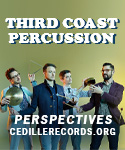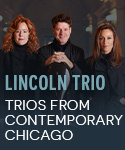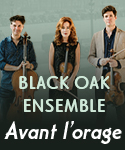Metropolitan Opera House, New York; May, 2023—If you’ve been to the Metropolitan Opera in the last 40 years to experience Mozart’s great Die Zauberflöte, you were greeted by a blaze of color. The production by Marc Chagall that opened in 1967 was everything we love about Chagall: strange birds, floating violins, and almost visual overload. A production by David Hockney replaced it many years later–all angles, puffy clouds, and watercolors. And then, along came Julie Taymor’s amazingly playful gigantic puppets, a flying raptor with the three boys on its back, a brilliantly green Papageno against an orange sky.
With all three productions the audience sat agape, watching the huge stage pictures and wondering what could top the previous display. With Simon McBurney’s new staging at the Met, expectations are immediately altered; the audience enters and the stage is visible and empty. The orchestra pit has been raised to stage level so we can see the players and they can appreciate the stage action.
At one side of the stage is what looks like an artist’s studio manned by artist Blake Habermann, with a blackboard, projector, and other familiar objects from an atelier. He draws directions. On the other side is a full bar, a thunder sheet, some vegetables and glassware; sounds are created by Ruth Sullivan. McBurney is clearly not satisfied with just a stage; he’s practically taken over the whole opera house; indeed, he’s brought the opera to the audience, rather than the usual vice-versa. The first row of seats are left empty – the singers will be joining us. With lights still up and the audience still taking their seats, the conductor mounts the podium unnoticed and the overture begins. We are both inside and outside the opera.
Tamino enters wearing Camo and a blue track suit; when the half-naked, randy ladies find him, they take his clothes and he spends much of Act 1 in his skivvies. It’s both adorable and off-putting. Later, we meet Pamina, and she’s in a sort of slip/nightshirt as well. No Princely attire for these kids–they are an extension of the audience. And that blaze of color? None, save for Papageno’s overalls. Otherwise, everyone is in grays and blacks and whites. Scenery? Unlike the 13 brilliantly colored backdrops for the Chagall or Taymor’s floating polar bears, we get a large, rectangular platform suspended from cables attached to its corners that can be raised, lowered, and tilted. Colorless and seemingly precarious (like life?). Sarastro and his followers–gray business suits, wide ties, carrying clipboards. Dreary. Their temple? A boardroom.
Mozart and Schikaneder were Masons in good stead. But here the trials by fire and water find our prince and princess floating in air suspended by strings while projections on a scrim depict flames and a deluge. Rather than being a catharsis, this somehow seems tricky and entertaining. McBurney has also chucked the libretto’s flagrant misogyny–the Queen of the Night and Sarastro kiss and make up at the end. The racism is ignored–the evil Monostatos, a Moor, is here white and in a business suit. And Sarastro and his men, supposedly the souls of benevolence and light, lose their charm around a conference table.
So what is this? Well, it’s vastly entertaining. Much of the mystery is lifted, since it’s seen in full view. The characters’ climbing on and off the stage and our ability to see how the magic works brings us closer to the opera than ever before. The moralizing goes on in the libretto, but McBurney cares most about the only character who does not conform, and this sets the mood. Papageno depends on both the Queen and Sarastro for sustenance and protection, but he subscribes to neither’s outlook. He doesn’t really know about rules, and he doesn’t care.
Trying to create a melody? Tap one out with celery stalks on bottles, and if one bottle isn’t full enough for the tone you’re looking for, unzip and fill it up. Then, he begins his big second-act aria, “Ein Mädchen oder Weibchen”, without waiting for his orchestral cue. He carries a ladder with him almost throughout, he climbs to the playing platform, he goes where he shouldn’t be able to go. He’s wild, harmless, anarchic, unpredictable, and charming all at once, and he’s the liaison between stage and audience–and like him, we stop caring about the high-flown issues, see the characters as people who roam the audience, speak directly to us, and wind up happy.
And the singers! They are so naturally directed, both dramatically and musically, that there’s almost no need for analysis: Lawrence Brownlee as Tamino, usually heard in high-flying Rossini or Donizetti, used his ideally focused tenor, handsome breath control, and fine diction to make us care about this regular man-on-a-love-quest. The enchanting Erin Morley, sounding as lovely as ever, has a wonderful way with the audience and made Pamina something other than a needy and sad victim; “Ach ich fühls” was a frozen moment of elegant dignity. Stephen Milling’s Sarastro, a stern CEO, was appreciated more for his resonant low notes than warm authority. Kathryn Lewek, singing her 300th Queen of the Night, portrayed as a vicious old hag in a wheelchair, knocked both of her arias, high Fs and all, out of the house.
And then there’s Papageno. This was the role Schikaneder played at the premiere at his theater. The character, devoid of pretense, is a bit rough, and Thomas Oliemans, in his Met debut, was Papgeno to the hilt. The voice is impressive but not large, appealing but not traditionally beautiful. He has conquered all the niceties of Mozart singing but does not underline them; his singing and acting are as natural as Papageno’s needs. He’s honestly giddy when he meets Papagena, sung wittily by Ashley Emerson.
The Three Ladies , lusty and having fun, were Alexandria Shiner, Olivia Vote, and Tamara Mumford. The Three Boys–Deven Agge, Julian Knopf, and Luka Zyllik–were presented as wizened old men, adorably wise and singing like angels.
Nathalie Stutzmann, even after her brilliant debut leading Don Giovanni, surprised with her warm, singer-loving approach. Tempos were just right, especially given McBurney’s fidgeting with dramatic timing, and she played through the laughs. The orchestra was its usual remarkable self. Those who miss James Levine’s intense solemnity in this score found it in Stutzmann’s March of the priests, which was so beautiful as to transcend time. Yes, a non-preachy “Magic” flute for all to see and hear.































